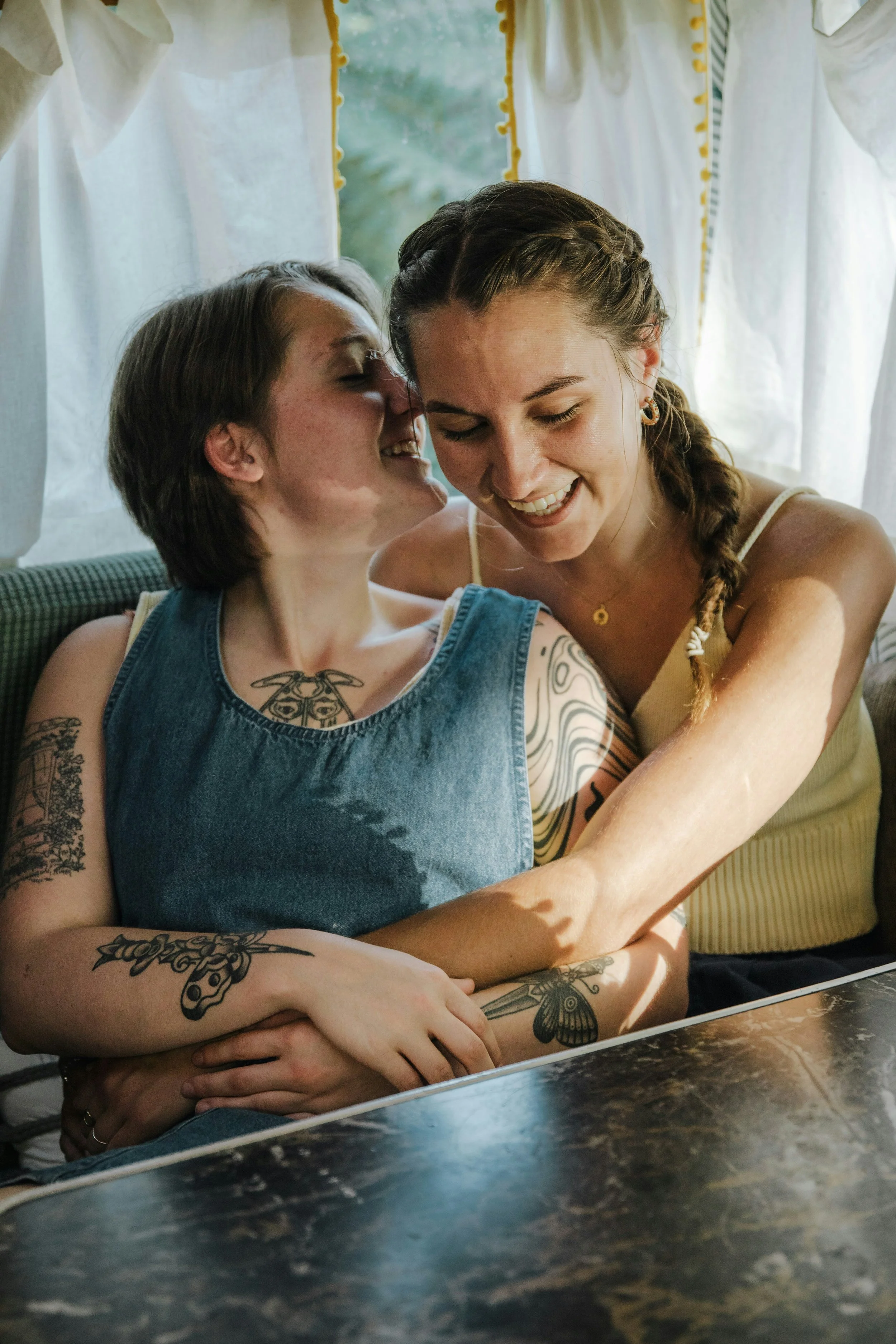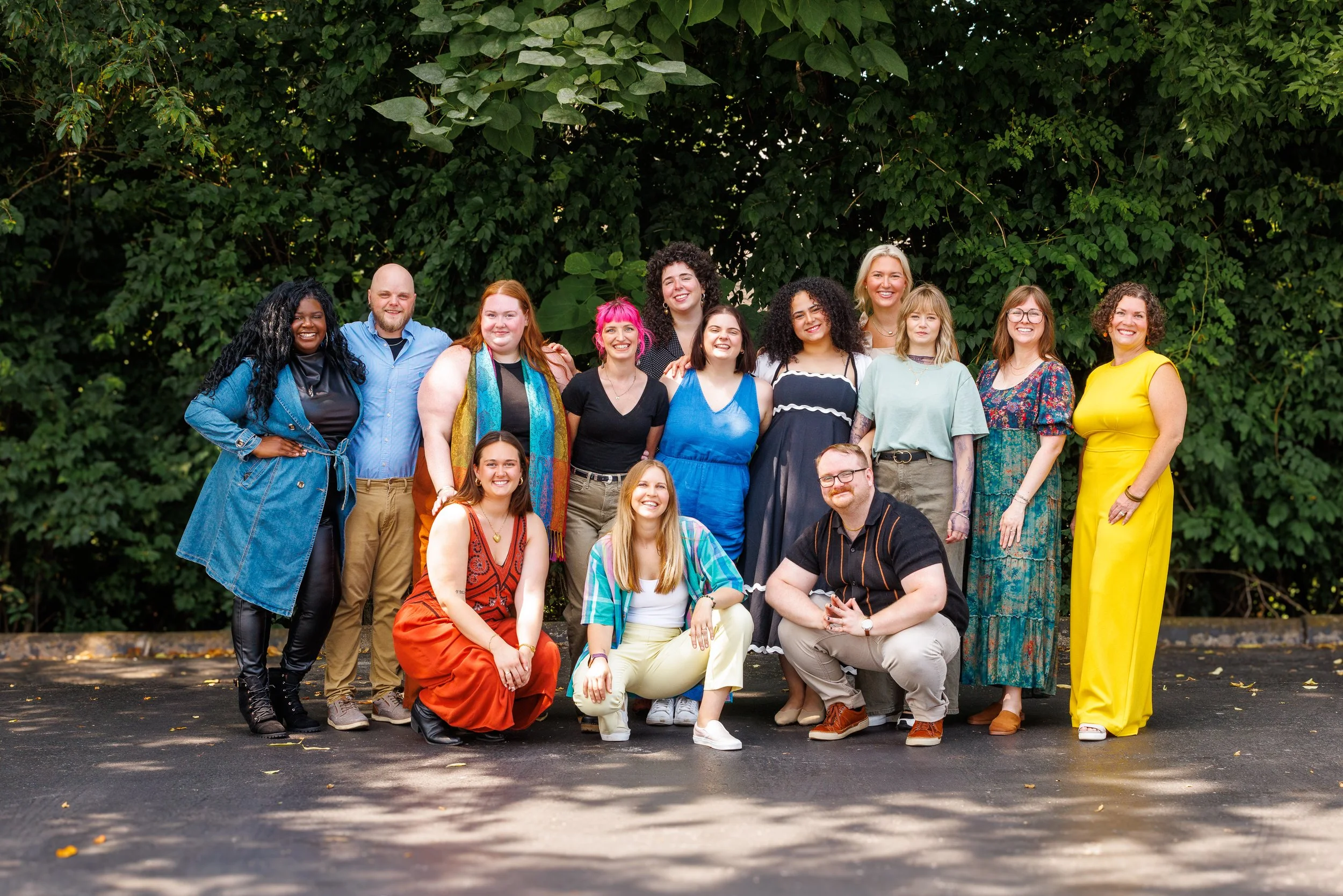Building Secure Relationships: From Attachment Wounds to Lasting Connection
I’ll be honest— even as a couples therapist, for a long time I avoided a lot of the books and trainings focused specifically on attachment.
One – I already had a pretty solid background in attachment theory from my trauma training.
Two – I viewed it as an overblown, trendy buzzword that was just another example of pop psychology (lookin’ at you, IG & TikTok) removing all nuance from psychological concepts. Like “I have anxious attachment so I can’t help it!” or “Ugh, he’s such an avoidant.” 🫣
When I was working with a couple with such glaring attachment issues that I knew it was time to get over myself and dig deeper, I was surprisingly delighted with Stan Tatkin’s renowned book, Wired for Love. In the 2nd edition of the book, he even addresses this problem head-on, stating that he never meant for anyone to get overly attached (see what I did there?) to the attachment styles, which he affectionately names as Island (avoidant), Wave (anxious), and Anchor (secure). (I am always here for a nature-based metaphor! 🤓🌳)
What I loved about Wired for Love and Stan’s approach to attachment is that it explores so much more than just basic attachment styles— it’s all about understanding what “secure functioning” really looks like in a relationship and why it’s so important. He gives so many great examples of couples in all sorts of relatable situations that really make the concepts come alive.
Core Attachment Concepts
When we think about healing, we often imagine it as an internal journey. But some of our deepest wounds—and our most profound opportunities for growth—show up in our relationships. That’s because humans are wired for connection, and much of our sense of safety, identity, and self-worth is shaped through our interactions with others. For those who carry attachment wounds, relationships can be a source of confusion, pain, or even fear. But with the right support and tools, those very same relationships can become vehicles for deep healing and transformation.
At The Gaia Center, attachment theory is one of the lenses that informs all the work that we do with both individuals and couples. An attachment therapy approach is rooted in understanding how early life experiences shape our relational patterns. Our goal is to help clients shift from old, protective strategies into new ways of relating that foster trust, collaboration, and intimacy. Some of the most influential couples therapy models we draw from include The Gottman Method, The Doherty Approach, Stan Tatkin’s Psychobiological Approach to Couple Therapy (PACT) and Terry Real’s Relational Life Therapy (RLT), of which all offer grounded, skills-based paths toward secure functioning relationships.
What Is a Secure Functioning Relationship?
Stan Tatkin defines a secure functioning relationship as a “two-person psychological system” built on shared principles of safety, fairness, and mutual support. Insecure relationships often mirror early attachment disruptions—patterns of avoidance, anxiety, or disorganized responses to closeness and conflict. Tatkin’s work emphasizes that healing doesn't just happen within the individual; it happens in the space between two people.
In fact, PACT teaches that relationships must be governed by agreements and rituals that protect the couple’s safety and connection—especially during times of stress. His 15 Principles for a Secure Functioning Relationship include practices like:
Putting the relationship first, even when life gets busy
Being each other’s go-to person for emotional support
Resolving hurts quickly without relying on excuses or explanations
Sharing power and making decisions that serve both individuals and the partnership
This approach moves beyond typical "communication skills" to focus on nervous system regulation, attachment dynamics, and mutual responsibility for relational health.
Healing Relational Trauma with RLT
Terry Real, founder of Relational Life Therapy (RLT), brings another critical lens: the intersection of trauma, gender roles, and relational empowerment. His work shines a light on the ways that many people—especially men raised in patriarchal cultures—are taught to disconnect from their emotions, needs, and vulnerability.
Real’s model doesn’t shy away from calling out dysfunctional behaviors, but it does so with compassion and clarity. A hallmark of RLT is the belief that people don’t change when they feel shamed—they change when they feel seen, held accountable, and offered better tools. Clients learn to move from “adaptive child” behaviors (think: withdrawal, rage, people-pleasing, stonewalling) into their “wise adult” selves—grounded, responsive, and capable of repair.
RLT also integrates inner child work and direct coaching to support relational growth. At The Gaia Center, we often use RLT principles to help partners identify when they’re reacting from old survival strategies and how to shift toward more mature, loving responses.
The Doherty Approach: A Systemic Perspective
Another deeply impactful couples model we draw from is The Doherty Approach, rooted in the work of renowned family and couples therapist Dr. Bill Doherty. Doherty brings a systemic and relational mindset to couples therapy, emphasizing that relationships don’t exist in isolation—they are part of a larger system that includes family, culture, values, and shared responsibilities.
Rather than focusing solely on individual needs or even communication patterns, Doherty encourages couples to consider the moral and relational commitments they bring to the partnership. What kind of family are we building together? What kind of culture are we co-creating? How do our actions affect not just ourselves but the whole relational system?
Doherty’s framework also supports therapists in taking an active, guiding role—offering both structure and insight without collapsing into neutrality. At The Gaia Center, we use this approach to help couples identify what they are each bringing into the relationship, and how their patterns (including but not limited to attachment) interact in the broader system.
One of Bill Doherty’s unique contributions to the field of couples work is Discernment Counseling, a structured approach for “mixed-agenda couples”—where one partner is leaning out of the relationship while the other wants to save it. In these cases, therapy isn’t about “fixing” the relationship right away, but about helping partners gain clarity on whether and how to move forward.
What Attachment Therapy Looks Like in Practice
So what does attachment therapy actually look like in the therapy room?
Let’s say a couple comes in with a recurring pattern: one partner shuts down during conflict, while the other escalates, desperate for connection. This is a classic example of anxious (Wave) and avoidant (Island) attachment dynamics colliding. In a secure functioning model, we don’t just focus on “communication tips”—we help both partners understand what their nervous systems are doing, and why.
Using Tatkin’s model, we might teach partners how to regulate each other’s distress (a concept known as “couple bubble caretaking”), and we might work on daily rituals that promote emotional safety, like greeting each other warmly at the end of the day or offering eye contact and touch as co-regulation tools.
From an RLT lens, we might explore what each partner learned growing up about love, vulnerability, and power—and what gets in the way of showing up differently now. And we’d work together to co-create agreements and values that support a new relational culture.
Backed by Research and Emotion
Of course, no relationship framework would be complete without referencing the powerful work of Sue Johnson, creator of Emotionally Focused Therapy (EFT), and John and Julie Gottman, pioneers of the Gottman Method.
Johnson’s work reminds us that at the heart of most conflict is a protest for connection. Her EFT model guides couples to identify their core emotions and unmet attachment needs beneath the surface of blame and defensiveness. This emotional attunement is essential in moving toward secure bonding.
Meanwhile, the Gottmans’ decades of research offer clear, evidence-based guidance for what successful relationships look like: high levels of trust, effective conflict management, shared meaning, and a 5:1 ratio of positive to negative interactions. Their concepts—like the Four Horsemen (criticism, defensiveness, contempt, and stonewalling)—help couples identify destructive patterns and replace them with healthier alternatives like gentle start-up, taking responsibility, and turning toward bids for connection.
From Wounds to Wisdom
Building a secure relationship doesn’t mean never fighting or always getting it right. It means creating a foundation where repair is possible, where transparency and care are prioritized, and where both partners feel like they’re on the same team—even in the hard moments.
Attachment wounds don’t have to dictate your future. With the right therapeutic support, you can learn how to recognize old patterns, soothe your nervous system, and co-create something new—something rooted in mutual respect, emotional safety, and deep connection.
Ready to Begin Your Attachment Healing Journey?
Whether you’re navigating relational conflict, recovering from past relationship trauma, or simply longing for deeper intimacy, working with a therapist trained in attachment therapy can offer a transformative path forward.
At The Gaia Center for Embodied Healing, our therapists draw from the best of The Gottman Method, The Doherty Approach, RLT, PACT, and EFT to support individuals and couples in building the relationships they deserve.
You don’t have to do it alone. Book a free consult with one of our therapists today and take the first step toward a more secure, connected, and meaningful relationship.








